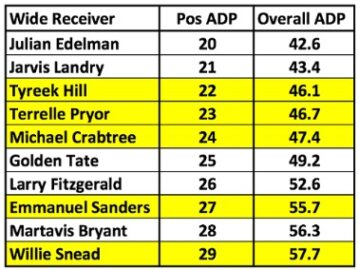
The right accounting software will allow you to send invoices more quickly and with fewer errors. If you struggle to get your clients to pay their invoices on time, you may need to set up more effective payment terms. Here are seven tips for setting up better payment terms for your clients. Accounts payable (AP), or “payables,” refer to a company’s short-term obligations owed to its creditors or suppliers, which have not yet been paid. Payables appear on a company’s balance sheet as a current liability.

You may have a designated accounts payable department that handles AP, it may fall under general bookkeeping and accounting duties, or you may opt for AP automation. There are several ways the accounts payable process plays an important role in your business’s accounting operations. Debit cards share many advantages as credit cards, as the small piece of plastic is easy to carry, widely accepted by many merchants, and has varying levels of fraud protection. However, debit cards often have less promotional opportunities and may result in processing fees if you accidently attempt to overdraw your account. Debit cards may look similar to credit cards, but their underlying mechanism is entirely different. When a debit card is used, funds are immediately withdrawn from an individual’s account.
What is an example of an ACH payment?
When you pay your bill with a different method other than PayPal, it can take some time to reach our system. Once your payment posts in the PayPal network, the bill will show as “paid” and you can disregard the overdue notice. Put simply, accounts payable describes the funds that you owe and accounts receivable is the amount you expect to earn.

Some companies may report both GAAP and non-GAAP measures when reporting their financial results. GAAP regulations require that non-GAAP measures be identified in financial statements and other public disclosures, such as press releases. Accountants must strive to fully disclose all financial data and accounting information in financial reports. The accountant strives to provide an accurate and impartial depiction of a company’s financial situation.
A payment from a manufacturer to a supplier, for example, would typically be done via wire transfer, particularly if it was an international payment. An ACH payment is often used for direct deposits of payroll for a company’s employees. For example, a customer has a $20,000 outstanding balance due to a vendor.
How to Record Payments in Accounting?
For example, a manufacturer would incur higher costs if it doubled its product output. Companies may also face higher tax rates as their sales and profits rise. By comparison, fixed what is balance sheet lending and how is it different to p2p lending costs remain the same regardless of production output or sales volume. A liability (LIAB) occurs when an individual or business owes money to another person or organization.
GAAP aims to improve the clarity, consistency, and comparability of the communication of financial information. Tax accountants overseeing returns in the United States rely on guidance from the Internal Revenue Service. Federal tax returns must comply with tax guidance outlined by the Internal Revenue Code (IRC).
- That cost would be recognized regardless of whether or not the consultant had invoiced the company for their services.
- The ACH payment network offers benefits to businesses and consumers alike.
- The ultimate goal of GAAP is to ensure a company’s financial statements are complete, consistent, and comparable.
- To record accounts payable, the accountant credits accounts payable when the bill or invoice is received.
Use a cash flow statement template, in conjunction with your balance sheet and income statement, to provide a comprehensive look into the financial status of your company. This cash flow template includes two additional worksheets to track month-to-month and year-to-year cash flow. Proper double-entry bookkeeping requires that there must always be an offsetting debit and credit for all entries made into the general ledger.
Cash
Investors are often paid in cash, but may also be issued stock, real property, or liquidation proceeds. In most cases, dividends follow a regular monthly, quarterly, or annual payment schedule. However, they can also be offered as exceptional one-time bonuses. Revenues and expenses recognized by a company but not yet recorded in their accounts are known as accruals (ACCR). By definition, accruals occur before an exchange of money resolves the transaction.
You may base installment agreements on time—every three months, for example—or upon delivering a specific part of the project. Invoices with payment terms outline when your organization will receive income. Conceptually, GAAP is more rules-based while IFRS is more guided by principles. GAAP is used mainly in the U.S. and IFRS is an international standard. The two standards treat inventories, investments, long-lived assets, extraordinary items, and discontinued operations, among others.
Obtain Copy of Invoice
A credit is a record of all money expected to come out of an account. Essentially, debits and credits track where the money in your business is coming from, and where it’s going. A cash flow statement analyzes your business’s operating, financing, and investing activities to show how and where you’re receiving and spending money. Examples of this might include a cash flow statement for operations or an income statement for an upcoming board meeting.
Ideally, you should complete your bookkeeping every month so you can keep a thumb on the pulse of your income, expenses, and overall business performance. Many business expenses are tax deductions — expenses that deduct from what you owe in taxes. For example, if I spent $500 to fly to and attend a marketing conference, that’s $500 less I owe in taxes for that year. In order to claim a deduction, you need to keep a record of that expense. Whether you’ve just launched your business or are a startup veteran, the following section is important.
Travel Itinerary Template
Accounting is a back-office function where employees may not directly interface with customers, product developers, or manufacturing. However, accounting plays a key role in the strategic planning, growth, and compliance requirements of a company. The history of accounting has been around almost as long as money itself. Accounting history dates back to ancient civilizations in Mesopotamia, Egypt, and Babylon. For example, during the Roman Empire, the government had detailed records of its finances. However, modern accounting as a profession has only been around since the early 19th century.
- For your first order of business, decide where to keep your money.
- Knowing this number comes into play when digging into deeper business insights by calculating your accounts receivable turnover.
- As used in accounting, inventory describes assets that a company intends to liquidate through sales operations.
The proper reporting of financial data should be conducted with no expectation of performance compensation. It’s also a good idea to create processes so that your reporting stays consistent over time. By law, accountants representing all publicly traded companies must comply with GAAP. Expenses include any purchases you make or money you spend in an effort to generate revenue. Equity can also be defined as the difference between your business’s assets (what you own) and liabilities (what you owe). It’s a critical component when calculating and managing your cash flow.
The 10 Key Principles of GAAP
Report on key metrics and get real-time visibility into work as it happens with roll-up reports, dashboards, and automated workflows built to keep your team connected and informed. Derived from the Latin phrase uberrimae fidei used within the insurance industry. Avoid a penalty by filing and paying your tax by the due date, even if you can’t pay what you owe. You will need to sign in using your credentials before you can pay and get more information about your payment history. Insights on business strategy and culture, right to your inbox.Part of the business.com network.
Tide Helps More SMEs Simplify Accounting With ‘First-of-its-Kind’ Upgrade – Yahoo Finance
Tide Helps More SMEs Simplify Accounting With ‘First-of-its-Kind’ Upgrade.
Posted: Tue, 01 Aug 2023 06:00:00 GMT [source]
A company may set the number of days to whatever they want; however, these terms must often be agreed to in the contract with the payee. In addition, a payer may offer a discount (i.e. 1%) if payment is made within a short period of time (i.e. 10 days). This is written as 1/10, net 30, and the company may offer that discount if it is urgent they receive cash. Accountants track partial payments on debts and liabilities using the term “on credit” (or “on account”). Both versions of the term describe products or services sold to customers without receiving upfront payment.


 No products in the cart.
No products in the cart.